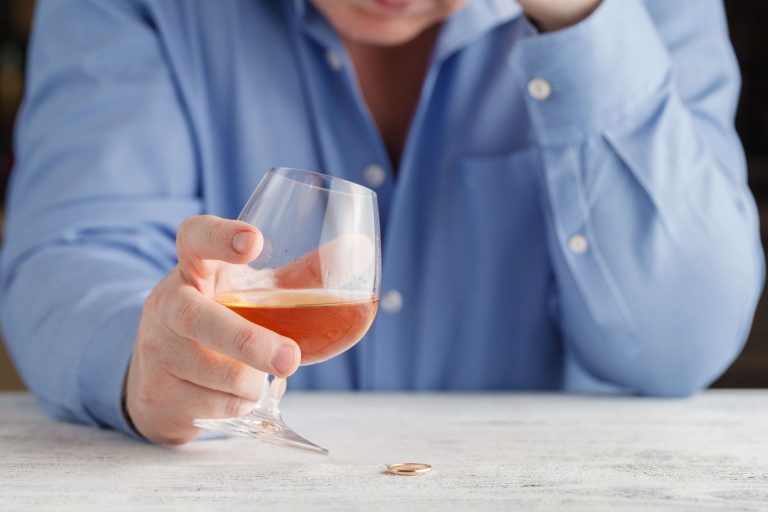Thus deficiencies in any combination of these neurochemicals may contribute to a predisposition to addiction. It is important to note that one person’s reaction to the reward experience may be quite different from another’s. This realization should help us cultivate empathy for those with addiction—it is very likely that others truly do not know how drugs make them feel. There are multiple theories of the neurobiology of addiction, and two prominent theories include the Opponent Process theory and the Incentive-Sensitization theory.

The importance of choice and agency in animal models of addiction
Neuroscience research supports the idea that addiction is a habit that becomes quickly and deeply entrenched and self-perpetuating, rapidly rewiring the circuitry of the brain because it is aided and abetted by the power of dopamine. Under the unrestrained influence of dopamine, the brain becomes highly efficient in wanting the drug; it focuses attention on anything drug-related and prunes away nerve connections that respond to other inputs. The biological weakening of decision-making areas in the brain suggests why addicts pursue and consume drugs even in the face of negative consequences or the knowledge of positive outcomes that might come from quitting the drugs.
Professional development
In the United States, excessive behavior patterns—involving smartphone use, Internet gambling, gaming, pornography, even eating and shopping—are being studied as possible behavioral addiction. While such activities may provide the opportunity for ample immediate reward, it has not yet been determined that they meet all of the criteria for addictive behavior. In June 2018, the World Health Organization included Gaming Disorder, involving digital gaming or video gaming to such a degree that it takes priority over other interests and daily activities despite negative consequences, in its newest edition of https://thebostondigest.com/top-5-advantages-of-staying-in-a-sober-living-house/ the International Classification of Diseases. This inclusion reflects a consensus of experts from different disciplines and geographical regions around the world. They point out that only a tiny proportion of those who engage in digital or video gaming activities—notably those who have impaired control over the activity and spend excessive amounts of time at it—are at risk for the diagnosis. More straight forward protocols of differentiation include human neuroblastoma cell line SH-SY5Y to form dopaminergic neuronal-like cells are already used in in vitro molecular neuroscience (Dravid et al., 2021).
Reach your personal and professional goals

Here, we discuss the currently available methods of research in these areas and the strengths and limitations of practical, experimental addiction modelling. A fully comprehensive literature review of all theories cannot be completed within the scope of this mini-review, but the discrepancies and concordance between multiple leading models are presented (see Figure 1). • dopamine neurons, which are concentrated in the nucleus accumbent and form pathways of connection to other parts of the brain when activated by positive experiences. Talking about substance use disorder can be tricky, and not just because it’s a sensitive topic. In most cases, though, working with a therapist is the best course for addressing psychological dependence, whether it occurs on its own or alongside physical dependence. At a minimum, empirical research, including meta-analyses, submitted to Psychology of Addictive Behaviors must meet Level 1 (Disclosure) for all eight aspects of research planning and reporting as well as Level 2 (Requirement) for data citation and design and analysis transparency.
How to Address Anxiety Before, During, or After Driving
- The brain plays a leading role in addiction, just as it plays a role in all human behavior.
- In fact, mothers with SUDs –especially those with comorbid psychiatric problems– are more likely to have their own histories of abuse and neglect (Isosävi et al., 2016; Freeman, Collier, & Parillo, 2002; Medrano, Hatch, Zule, & Desmond, 2002; Suchman et al., 2012).
- Ultimately, the Biopsychosocial Model highlights the need for a holistic understanding of addiction and a multifaceted approach to care in order to effectively support individuals on their path to recovery.
- When first put forward, the brain disease view was mainly an attempt to articulate an effective response to prevailing nonscientific, moralizing, and stigmatizing attitudes to addiction.
In response to repeated use of a highly pleasurable experience—drugs, gambling—neurons adjust their wiring to become increasingly efficient at relaying the underlying signals. And neural connection to the brain centers of impulse control and decision-making is weakened. It stimulates the nucleus accumbens, and overactivity of the nucleus accumbens progressively weakens its connectivity to the prefrontal cortex, seat of executive functioning. One result is impaired judgment, decision-making, and impulse control, a hallmark of addiction.
Through experience, these interactions become embedded in the child’s internal world as mental representations or internal objects (Beres & Joseph, 1970; Kohut, 1979; Stern, 1983). These imaginary representations are imbued with real (i.e., conscious) and fantasized (i.e., unconscious) qualities of significant others and relationships. Throughout development, these internal objects and their imaginary interaction with the external world model and guide future social interactions Top 5 Advantages of Staying in a Sober Living House by means of associative learning (Johnson, 2013). The failure of primary caregivers at providing proper care and affection is thought to be experienced by the infant as a “nameless dread” (Bion, 1962), or as having lost the object’s love (Freud, S., 1917; Klein, 1940). This highly distressing internal state is thought to thwart the infant’s ability to integrate the good (i.e., nurturing, soothing) and bad (i.e., distressing, frustrating) qualities of the internal object.

This is in line with former research on recovery, which emphasised the importance of social relationships during a recovery-process [22, 31, 35, 43, 44]. This article presents a qualitative study based on the paradigm of the social construction of the philosophy of science, understanding people’s meaning-making as a personal process which is negotiated with other people and provided by culture [3, 13, 24]. They had completed all the surveys and tests in the Tyrili cohort 2016, which will give us the opportunity to compare results from both quantitative and qualitative data in future. The informant group represented the average age of the patients, and were between 25 and 45 years old, and included both men and women. Fifteen of the 25 former patients responded to our application to participate in the study. Four were positive to be interviewed, but due to private situations (new-born child, substance use) they were not able to keep their appointments.
- Typically, one’s tolerance to a substance increases as the body adapts to its presence.
- Recent application of RNA sequencing technology to complete multiplexed morphogen screens of these organoids has provided more clarity on differentiating to specific neural subtypes, allowing replication of human neuronal cells with distinct, diverse identities for experimentation (Amin et al., 2023).
- The authors would like to acknowledge all colleagues within the Biodiscovery Institute, the Translational and Radiation Biology team and the Wellcome Trust Molecular Pharmacology and Drug Discovery DTP for their constant support.
- It’s hard to nail down what that means, but it does rightly suggest that there is an involuntary takeover of the brain that compromises decision-making and diminishes freedom of choice, making quitting difficult even in the face of desire to do so.
There are psychodynamic, attachment theory, and self-medication perspectives about addiction to consider, as well. These psychological approaches suggest that a person uses drugs to fill a terrific void in their emotional lives or as a means of quieting voices of inner conflict. Through observational learning, we learn to imitate both the precise behaviors and general classes of behavior modeled by others in our social environment. In other words, a person might not imitate a parent who uses alcohol for relaxation from stress (the specific or precise behavior) but imitates the general class of behavior being modeled by using marijuana this way.
